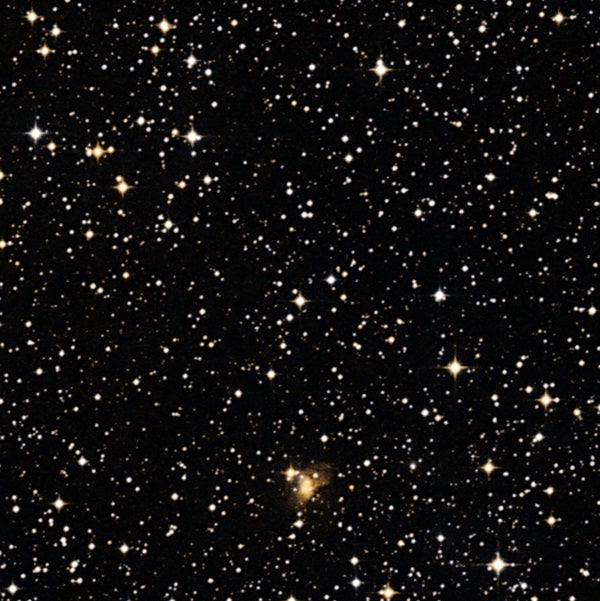The confirmation of the nature of CoRoT-7b as the first rocky planet outside our solar system marks a significant step forward in the search for earth-like exoplanets. The detection by CoRoT (Convection ROtation and planetary Transits) and follow-up radial velocity measurements with the High Accuracy Radial Velocity Planet Searcher (HARPS) suggest that this exoplanet, CoRoT-7b, has a density similar to that of Mercury, Venus, Mars, and Earth making it only the fifth known terrestrial planet in the universe.
The search for a habitable exoplanet is one of the holy grails in astronomy. One of the first steps towards this goal is to detect terrestrial planets around solar-type stars. Dedicated programs, using telescopes in space and on the ground, have yielded evidence for hundreds of planets outside of our solar system. The majority of these are giant, gaseous planets, but in recent years small, almost earth-mass planets have been detected, demonstrating that the discovery of Earth analogues — exoplanets with one Earth mass or one Earth radius orbiting a solar-type star at a distance of about 1 astronomical unit — is within reach.
A number of techniques are routinely employed in the search for exoplanets — spectroscopic radial velocity, astrometry, microlensing, photometric transits. Of these, the search for transits — the passage of the exoplanet in front of the parent star — provides unprecedented access to the planet’s physical properties. In particular, the combination of transit photometry and radial velocity measurements provides direct and accurate estimates of the planetary mass and radius, hence mean density. These parameters in turn provide tight constraints on the composition and physical structure of the planet and on the likelihood of the exoplanet being a true Earth analogue.
The CoRoT space mission employs the transit strategy in the search for exoplanets. Continuous observations, lasting about 150 days each, are made of two large (4 square degrees) regions towards the center and anti-center of the galaxy. During the first of these observation periods towards the anti-center (October 2007 to March 2008), 46 stars exhibited evidence for transits, among them CoRoT-7, a main-sequence, close-by (at a distance of 150 pc) solar-type star.
Investigation of the data, as described by Alain Léger and colleagues, provided compelling evidence for the presence of an exoplanet. The discovery was announced earlier this year at which time the analysis of CoRoT data had shown that CoRoT-7b has a diameter less than twice that of Earth, making it the smallest exoplanet to date orbiting a main-sequence star. The CoRoT data also demonstrated that the planet is about 1.6 million miles (2.5 million kilometers) from its parent star and orbits once every 20.4 hours.
Further progress, and in particular the determination of the planet mass, could only be made by obtaining accurate measurements of the variation in the velocity of the star caused by the gravitational pull of the orbiting planet. The need for ground-based support observations for CoRoT had always been envisioned, and time on the HARPS spectrograph at the European Southern Observatory’s (ESO) 3.6-m telescope at La Silla in Chile had been secured as a result of the European Space Agency’s (ESA) call for European co-investigators for CoRoT. Didier Queloz and colleagues describe how 70 hours of observations of the CoRoT-7 system with HARPS finally provided the sought-after result: CoRoT-7b is one of the lightest exoplanets detected to date with a mass five times that of the Earth. This puts CoRoT-7b firmly in the category of “super-Earth” – an exoplanet with a mass between that of Earth and gas giants.
Although about a dozen super-Earths have been detected, CoRoT-7b is the first for which both mass and radius estimates are available. Combining the radius estimates from CoRoT and the mass estimates from HARPS results in an exoplanet mean density of 5.5 g/cm3. There are only three other known planets with similar density — Earth, Mercury, and Venus (Mars is less dense) — which strongly suggests that the planet is a solid, rocky planet.
“We are coming tantalizing close to reaching the ultimate goal of detecting a true earth-like planet,” said Malcolm Fridlund, ESA CoRoT project scientist and member of the CoRoT science team. “This bodes well for future exoplanet search missions, such as the Cosmic Vision candidate, PLAnetary Transits and Oscillations of stars (PLATO).”










